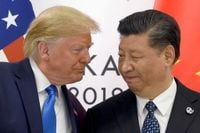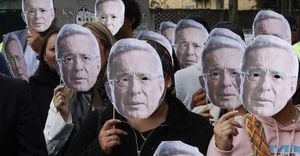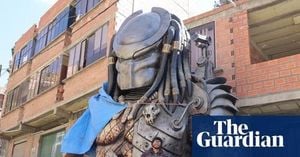In a week marked by diplomatic maneuvering, sharp policy contrasts, and regional upheaval, Asia’s political and security landscape has rarely looked so dynamic—or so fraught. From US President Donald Trump’s unpredictable tariff decisions to record-breaking heat in Japan and a jailing that stunned South Korea, the region’s headlines have been nothing short of dramatic.
The most headline-grabbing development came as President Trump laid out his divergent approaches to India and China. According to The Straits Times, Trump slapped India with a steep 25% tariff and an additional 25% penalty, punishing New Delhi for its ongoing purchases of Russian oil. Senior columnist Ravi Velloor attributed this harsh stance to Trump’s mounting frustration, noting, “Delhi’s increased imports of Russian oil — which helps… Putin thwart the pressure from Mr Trump to end the Ukraine War — seem to have jangled a final Trumpian nerve.”
Yet, while India faced Trump’s ire, China received a reprieve. Trump extended a 90-day economic truce with Beijing, pushing back the threat of new tariffs until November 9, 2025. This contrast, as explained by Jianli Yang in The Diplomat, comes down to leverage and strategic calculation. “US policymakers thus believe they can pressure India economically without risking the kind of systemic disruption that would follow a direct confrontation with China,” wrote Yang. The US and China, he explained, share a much deeper economic interdependence, making both sides wary of escalation.
Beneath these economic moves lies a more controversial rationale: the belief in Washington that China could play a pivotal role in resolving the Russia-Ukraine war. Trump reportedly sees China’s President Xi Jinping as a potential kingmaker, someone who could “lend legitimacy to any peace deal.” Yang argued that “the possibility — however slim — that Beijing might someday pressure Moscow towards compromise serves as an argument for strategic patience, not confrontation.”
Preparations are now underway for a possible Trump-Xi summit in China, potentially coinciding with the ASEAN East Asia Summit in Kuala Lumpur from October 26-28, the APEC meeting in Gyeongju, South Korea at the end of October, or even a dramatic direct visit to China itself. As The Straits Times reported, “Should it take place, the meeting would be the most critical between world leaders in 2025.” Beijing and Washington are both on standby, with officials working behind the scenes to set the stage for high-stakes diplomacy.
In a move that surprised some observers, Trump signed an executive order just hours before the trade truce with China was set to expire, as reported by the South China Morning Post. He praised Beijing for its steps toward “remedying non-reciprocal trade arrangements” and called on China to quadruple its purchases of American soybeans. “China is worried about its shortage of soybeans,” Trump posted on social media. “Our great farmers produce the most robust soybeans. I hope China will quickly quadruple its soybean orders. This is also a way of substantially reducing China’s trade deficit. Rapid service will be provided. Thank you President Xi.”
Amid these overtures, the Taiwan question remains a persistent source of tension. In an August 15 interview with Fox News, Trump revealed that Xi Jinping had promised him China would not invade Taiwan during Trump’s presidency. “He told me, 'I will never do it as long as you're president.' President Xi told me that, and I said, 'Well, I appreciate that,' but he also said, 'But I am very patient, and China is very patient,'” Trump recounted. The Chinese Embassy in Washington was quick to underscore the sensitivity of the matter, calling Taiwan “the most important and sensitive issue” in China-US relations and urging the US to adhere to the one-China principle and the three US-China joint communiques. Despite the US being Taiwan’s main arms supplier and international backer, it maintains no formal diplomatic ties with the island, a delicate balancing act that continues to define relations in the region.
Elsewhere in Asia, seismic shifts are underway. In South Korea, former first lady Kim Keon Hee was jailed on August 12 on charges including violations of the Capital Markets Act and Political Funds Act, related to allegations she accepted luxury gifts in exchange for influence. According to The Korea Times, Kim was held in solitary confinement with only a mattress on the floor, following a court’s concern that she might destroy evidence. Her husband, former president Yoon Suk Yeol, is also in custody on separate charges, marking the first time a former South Korean presidential couple has been jailed simultaneously. Kim, questioned by a special counsel team, exercised her right to remain silent, reported The Korea Herald.
Meanwhile, Japan is making waves in the defense sector. Australia’s decision to award Mitsubishi Heavy Industries a contract worth about A$10 billion to build 11 upgraded Mogami-class frigates—three in Japan and the rest in Australia—signals Tokyo’s emergence as a serious regional defense supplier. The Japan Times called the deal “a vote of confidence in Japan’s technological capabilities and confirmation of the commitment to deepening the ties between the two countries.” The editorial further noted, “The US is part of that relationship as well. The Mogami is designed to be interoperable with US partners.”
Indonesia, too, is flexing its military muscle. As reported by Singapore’s CNA, Indonesia became the first Southeast Asian country to deploy advanced KHAN ballistic missile systems, with a range of 280 kilometers, in East Kalimantan—the site of its future capital, Nusantara. President Prabowo Subianto has also restructured the military, establishing new regional commands and issuing dozens of promotions. “A big nation needs a strong military,” Prabowo declared, according to The Jakarta Post. The moves have sparked debate, with some experts seeing them as necessary modernization and others questioning their effectiveness.
Natural disasters and climate extremes have also battered the region. Hong Kong saw a dramatic shift from drought to deluge in August, with the Observatory issuing a black rain warning on August 14 after more than 70mm of rain fell in an hour. Kitty Tam Tsz-ching of Civic Exchange described the phenomenon as “climate whiplash”—a rapid, extreme oscillation between drought and torrential rain. “As global temperatures rise, the atmosphere holds more moisture, fuelling both extremes,” she wrote in the South China Morning Post. Beijing and surrounding areas were hit by nearly a year’s worth of rain in less than a week at the end of July, resulting in 30 deaths and the evacuation of 80,000 people, as reported by The Straits Times.
Japan, for its part, recorded its hottest day ever at 41.8°C in early August, breaking a record set just days earlier, according to The Japan Times. Nearly 11,000 people were hospitalized for heatstroke in late July and early August, with 16 deaths. Organizers of the Osaka World Expo 2025 scrambled to help visitors keep cool, deploying hundreds of umbrellas, mist fans, and air-conditioned buses.
From diplomatic intrigue and military modernization to climate extremes and political scandal, Asia in August 2025 is a region in flux—where every headline hints at deeper currents shaping the future.




